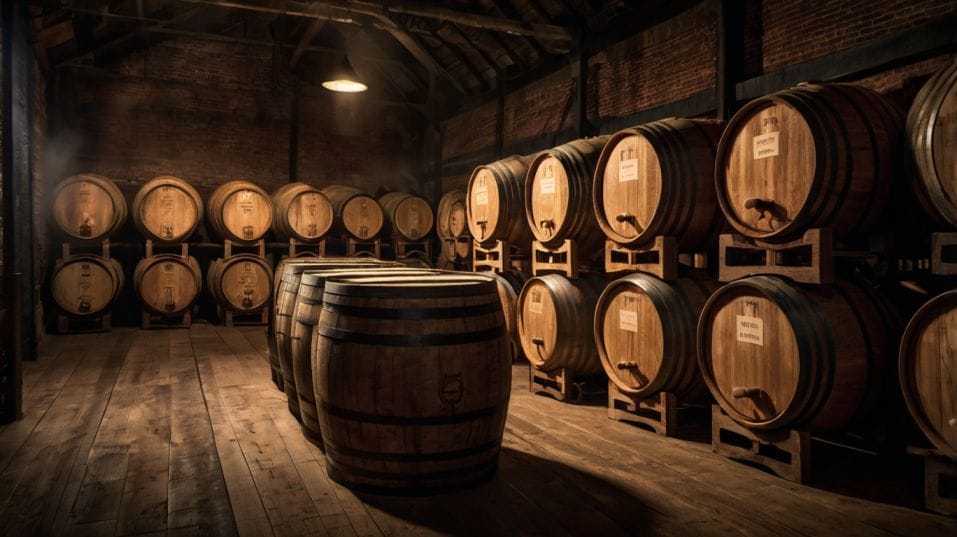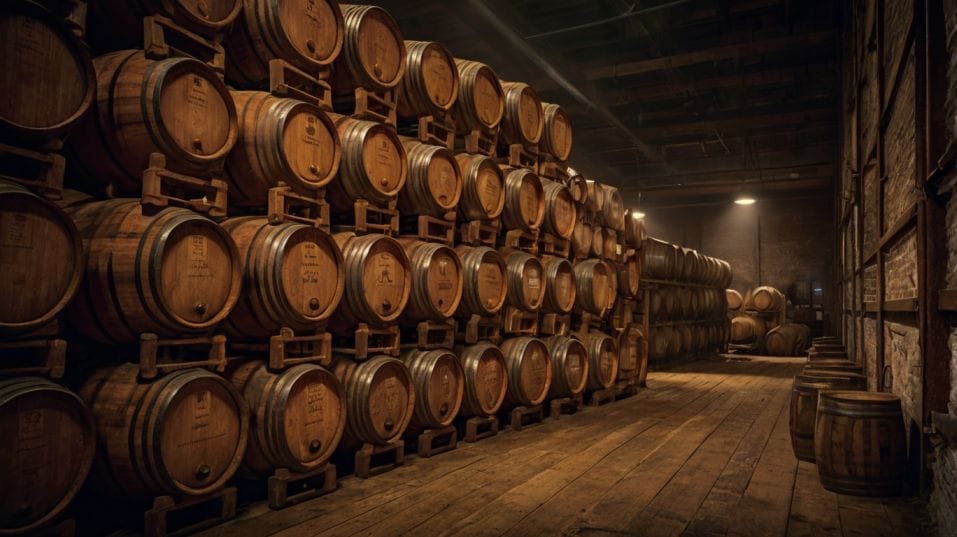Whiskey Used to Be Spelled Without the 'E' — Here’s Why
Why does some whiskey drop the “e”? Discover how spelling reveals history, technique, and flavor—and how it can sharpen your whiskey instincts.

Why does one bottle say “whiskey” and another “whisky”? That single missing letter isn’t a typo—it’s a clue.
Whether you're just getting into whiskey or building your first collection, understanding the “e” opens up a deeper layer of meaning.
It hints at tradition, technique, even flavor. And if you’re starting to taste with purpose, noticing that detail is one of the easiest ways to begin tasting smarter.
The Spelling Split Has Deep Roots
Let’s start at the beginning. Both whisky and whiskey trace their name to the same origin: the Gaelic phrase uisce beatha (Ireland) or uisge beatha (Scotland), which translates to “water of life.”
It’s a poetic name for a drink that, in many places, was life—economically, culturally, and socially.
As the spirit traveled through time and into the English language, uisge evolved into whisky. For centuries, there was no “e” in sight. Not in Scotland.
Not in Ireland. Not anywhere. That changed in the late 1800s, when Irish distillers—then seen as producers of smoother, cleaner spirits—began inserting the “e” into whiskey to differentiate themselves from their Scottish counterparts.

Why the “E” Was Added
Why? Scottish whisky had a reputation at the time for being heavier and less refined. The “e” was a way to say: this is different. More modern. More polished. And for a while, it worked—Irish whiskey dominated the global market.
Then came wars, Prohibition, and trade restrictions. The Irish whiskey industry collapsed, and Scotch took the lead globally. But the spelling stuck.
Irish distillers kept the “e.” Scottish distillers didn’t add one. As whiskey production spread to new countries, the spelling followed one of those two camps—usually based on who taught you how to make it.
Where the “E” Shows Up (and What It Signals)
Today, spelling tells you something—not everything—but enough to matter. Ireland and the United States spell it whiskey. Scotland, Canada, and Japan stick with whisky. This isn’t just about language. It’s a signal of style.
General Differences in Style
In most cases, whiskey with an “e” points toward:
- Triple distillation (especially in Ireland)
- Use of unmalted grains (common in American bourbon and Irish blends)
- Lighter, fruitier, or sweeter flavor profiles
While whisky without the “e” often signals:
- Double distillation (common in Scotch and Japanese production)
- Greater reliance on malted barley
- Earthier, smokier, or more robust flavor profiles
This doesn’t mean you can blindly judge a bottle based on spelling alone. But once you start tasting seriously, the patterns become clear.
The “e” (or lack of one) is part of the language of whiskey. If you're paying attention, it helps you move faster toward what you like—and what’s worth collecting.
Distillation Drives Flavor—and Spelling Reflects That
Spelling often mirrors the distillation choices that define a whiskey’s body and flavor.
Whiskey: Triple Distillation and Lighter Notes
In Ireland, where the “e” rules, many distillers triple-distill their spirit, which creates a cleaner, lighter mouthfeel.
It strips out some of the heavier compounds and leaves behind delicate notes—think green apple, honey, soft cereal grain, a touch of white pepper.
Even when peat is involved, Irish whiskey tends to round off the sharp edges. It’s built to be smooth, drinkable, and layered in subtle ways.
Whisky: Double Distillation and Complex Character
Scotland, the spiritual home of “whisky,” usually sticks to double distillation. That keeps more oils and heavier flavor molecules in the spirit.
Combined with aging in used barrels (often ex-bourbon or sherry casks), the result is complexity with teeth—smoke, salt, char, dried fruit, leather, peat, brine. These flavors are earned through time and craft, not just distillation polish.
The U.S. and Its Own Take
The U.S., which also uses the “e,” takes a different approach entirely. American whiskey—especially bourbon and rye—is often distilled in column stills and aged in new charred oak barrels.
The result? Vanilla, caramel, baking spice, toasted wood. Less fruit, more richness. The spelling reflects a shared lineage with Ireland, but the flavor map heads in a different direction.
The Spelling Also Hints at Cultural Identity
For traditional distillers, spelling isn’t just phonetics—it’s cultural. It’s about pride, process, and regional DNA.
When you see “whisky” on a Japanese label, it’s a conscious nod to Scotland, whose techniques Japanese producers deeply studied and emulated in the early 20th century.
When you see “whiskey” on a bottle from Kentucky, you’re looking at a lineage that goes back to Irish and Scottish immigrants—but evolved through American grains, laws, and climate.
So no, this isn’t just a spelling bee. It's a set of codes that distillers use to communicate who they are, where they come from, and how they make what’s in the bottle.
If you ignore those codes, you're missing context that can help you buy smarter, taste more intentionally, and appreciate what makes one dram stand out from another.
How This Helps You Buy, Taste, and Collect Better
If you want to build a whiskey shelf that reflects real knowledge—not marketing hype—learn to use the spelling as a map, not a rulebook.
Use Spelling as a Starting Point
Trying to train your palate toward subtler flavors? Irish whiskey might be a good place to start. Want to dive into complexity, peat, or cask influence?
Look toward Scottish or Japanese whisky. Exploring bourbon? Pay attention to how new oak and corn mashbills influence flavor—and how those differences show up in the “e” camp but taste nothing like Irish blends.
Once you recognize the spelling difference, start cross-referencing it with flavor, production method, and place.
This creates a feedback loop that sharpens your instinct. You’ll start to anticipate what a bottle might taste like before you even open it.
That’s not just helpful—it’s powerful. Especially when you’re exploring unfamiliar shelves or investing in bottles to age or share.
Final Thoughts
The “e” in whiskey isn’t decorative. It’s a signal—of process, place, and philosophy. Understanding why it’s there (or not) helps you read bottles more intelligently, taste with sharper focus, and collect with a clearer sense of purpose.
Don’t get caught up in hype or trends. Learn the language. Use the clues. Whether you’re sipping Irish blends, smoky Islay drams, or high-rye American bourbons, let the spelling teach you something.
Try both styles. Compare them blind. Build a flavor memory that can’t be faked—and trust it. Start with one pour. One letter. See where it takes you.




